Program
- Home
- Program
WEDNESDAY 2 JULY 2025
We care for more than 200 thousand exhibits spanning billions of years and welcome more than five million way
visitors annually.

-
 Dr Karin BecktorPrivate practise limited to orthodontics and oral surgery, Copenhagen, Denmark
Dr Karin BecktorPrivate practise limited to orthodontics and oral surgery, Copenhagen, Denmark
The aim of the presentation is to clarify if there is relationship between Transient Apical Breakdown (TAB) and orthodontic treatment.
Force application to a tooth during orthodontic treatment evokes a biological response to the periodontal ligament (PDL) and the dental pulp. Numerous studies have described the reaction of the PDL, fewer have dealt with pulpal changes.
The pulpal response to orthodontic forces involves cell damage, inflammation and wound healing which are process that could adversely affect the dental pulp. A consequence of the injury to the pulp tissue could be: Transient Apical Breakdown (TAB). The breakdown process is related to the type of injury and the stage of root development. It is usually caused by moderate injuries to the pulp such as subluxation, extrusions and lateral luxations or as a result of orthodontic treatment and occlusal trauma. The crown may display some discoloration and radiographical a periapical radiolucency associated with the affected tooth. The discoloration and apical lesion frequently later resolve itself without complications. Therefore, no endodontic treatment is needed.
The exact mechanism of TAB is not fully understood. Clinically however misdiagnosis may result in unnecessary endodontic treatment.
Cases with TAB in relation to orthodontic treatment will be presented and methods for diagnosis and treatment will be discussed.

-
 Prof Stella Chaushu, DMD PhDOrthodontist, Jerusalem, Israel
Prof Stella Chaushu, DMD PhDOrthodontist, Jerusalem, Israel

-
 Marjolijn GilijamseOral and Maxillofacial Surgeon, Amsterdam, The Netherlands
Marjolijn GilijamseOral and Maxillofacial Surgeon, Amsterdam, The Netherlands
- impaction or transmigration of the mandibular canine is rare
- autotransplantation of transmigrated mandibular canines is a reliable treatment option
- it all starts with case selection
- if you can remove it, you can use it
- collaboration is the key to success

-
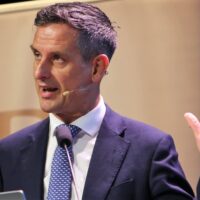 Simon LittlewoodOrthodontist, Bradford, UK
Simon LittlewoodOrthodontist, Bradford, UK
• manage expectations
• identify aetiology
• choose appropriate treatment
• choose retainers carefully

-
 Prof.dr. Aranzazu SenosiainOrthodontist, Madrid, Spain
Prof.dr. Aranzazu SenosiainOrthodontist, Madrid, Spain
Class III malocclusions pose significant challenges in orthodontic treatment, particularly when managing borderline cases that lie at the threshold between orthodontic and orthodontic-surgical intervention.
Skeletal anchorage has revolutionized the management of Class III malocclusions, offering a more stable and effective solution compared to traditional methods. This presentation will explore the use of skeletal anchorage, specifically focusing on mandibular plates systems and MARPE (Maxillary Anterior Rapid Palatal Expansion), in the treatment of Class III patients. These techniques allow for controlled and predictable skeletal movement, and avoids dentoalveolar compensations. Through clinical case examples, the advantages, limitations, and potential complications of skeletal anchorage with plates and MARPE will be discussed, providing insight into the future of Class III treatment protocols.

-
 Prof. dr. Yijin RenOrthodontist, Groningen, The Netherlands
Prof. dr. Yijin RenOrthodontist, Groningen, The Netherlands
Bone Anchored Maxillary Protraction (BAMP) has proven to be an effective alternative for treating mild to moderate Class III malocclusion in growing individuals. This lecture aims to provide a comprehensive understanding of the indications and contraindications for BAMP treatment in patients with cleft lip and palate. To this end, clinical and research outcomes will be presented from a fifteen-year experience at a single center regarding the use of BAMP in patients with cleft lip and palate, with a follow-up period of up to five years.

-
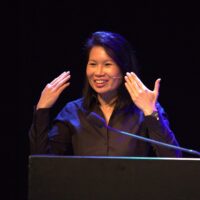 Dr Lydia LimOral and Maxillofacial Surgeon, Sydney, Australia
Dr Lydia LimOral and Maxillofacial Surgeon, Sydney, Australia
• Orthognathic surgery for the severe cleft deformity can be very challenging and conventional orthognathic procedures are often not possible due soft tissue scarring and high degree of relapse
• Distraction Osteogenesis is a valuable tool, however, Intra-oral distraction appliances has the problem of vector control and sometimes, a 2nd stage osteotomy is required to achieve satisfactory results.
• This presentation will discuss a strategy for a single stage Bimaxillary orthognathic surgery using distraction osteogenesis with internal maxillary distractors. The rationale for simultaneous mandibular osteotomy to achieve improved facial aesthetic outcomes will also be discussed. The results of 10 consecutive patients will be reviewed.
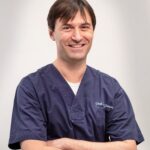
-
 Prof. Lorenzo Trevisiol, MD, Maxillo-Facial SurgeonOral and Maxillofacial Surgeon, Trento, Italy
Prof. Lorenzo Trevisiol, MD, Maxillo-Facial SurgeonOral and Maxillofacial Surgeon, Trento, Italy
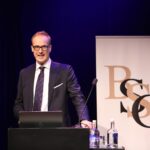
-
 Benedict WilmesOrthodontist, Dusseldorf, Germany
Benedict WilmesOrthodontist, Dusseldorf, Germany

-
 Adaia Valls Ontañón MD, DDS, PhD, MSc, FEBOMSOral and Maxillofacial Surgeon, Barcelona, Spain
Adaia Valls Ontañón MD, DDS, PhD, MSc, FEBOMSOral and Maxillofacial Surgeon, Barcelona, Spain
- There is still no consensus on the age limit for non-surgical maxillary expansion: individual assessment is required.
- Minimally invasive surgically assisted maxillary expansion is a low morbidity and safe procedure.
- Bone anchored and custom-designed devices are preferable to expand the midpalatal suture.

-
 Gabrielle MillesiOral and Maxillofacial Surgeon, Vienna, Austria
Gabrielle MillesiOral and Maxillofacial Surgeon, Vienna, Austria
3D virtual planning and digital workflow have become standard in orthognathic surgery. These new technologies have a major impact on timing of the surgical procedure by designing the desired digital occlusion in advance as well. In combination with robotically bent archwire techniques, the digital definition of the desired occlusion and the alignment of the dental arches, together with the orthodontist, allow a timewise prediction of the overall treatment plan. According to the parallel created virtual check of the existing or achieved occlusion on the way, by colour-mapping, the perfect timing for surgery can be defined, whether Surgery First, Surgery Early or Orthodontics First is feasable. The final decision whether maxillary segmentations are needed, also depends on this simulation. This virtual planning gives precise information on the length of the overall treatment also for the patient. All these arguments will be underlined and explained by showing clinical cases.
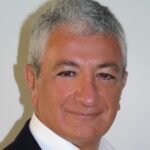
-
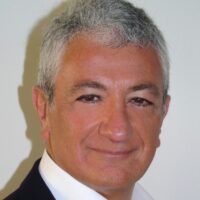 Rafaele SpenaOrthodontist, Ferrara, Italy
Rafaele SpenaOrthodontist, Ferrara, Italy
THURSDAY 3 JULY 2025

-
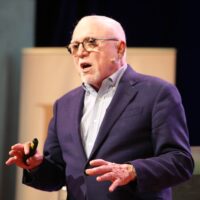 Ravindra NandaOrthodontist, Farmington, CT, USA
Ravindra NandaOrthodontist, Farmington, CT, USA
Shape memory 3D printed aligners have numerous advantages such as shape driven force system, light sustainable force, and ability to make them in- house. This presentation will show this technology can be adapted to Print aligners in- house immediately before or after the surgery.

-
 Stella ChaushuOrthodontist, Jerusalem, Israel
Stella ChaushuOrthodontist, Jerusalem, Israel

-
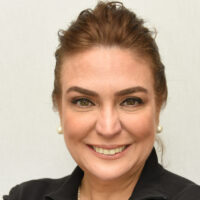 Flavia ArteseOrthodontist, Rio de Janeiro, Brazil
Flavia ArteseOrthodontist, Rio de Janeiro, Brazil

-
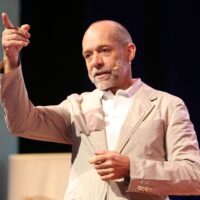 Federico Hernandez AlfaroOral and Maxillofacial Surgeon, Barcelona, Spain
Federico Hernandez AlfaroOral and Maxillofacial Surgeon, Barcelona, Spain
We have coined the concept of “Low Impact Orthofacial Surgery” (LIOS) as an Holistic approach to jaw surgery aimed at minimizing the physical, emotional, and social impact on the patient.
This approach involves several strategies and techniques designed to reduce pain, swelling, and recovery time while enhancing the overall patient experience.
In this lecture I will discuss our strategies intended to make the surgical process safer, more efficient, and less burdensome, ultimately leading to better patient satisfaction and outcomes.

-
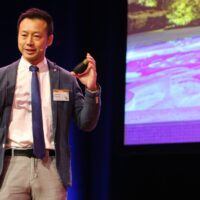 Mike LeungOral and Maxillofacial Surgeon, Hong Kong, China
Mike LeungOral and Maxillofacial Surgeon, Hong Kong, China
Le Fort 1 osteotomy is the most versatile maxillary orthognathic procedure
The technique will be described in a step-by-step guide for young surgeons
Some tips and tricks in performing a safe and predictable Le Fort 1 Osteotomy will be shared
Special technique to perform maxillary setback will be described in a stepwise manner
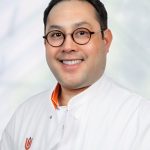
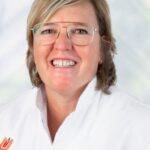

-
 Jean-Pierre HoOral and Maxillofacial Surgeon, Amsterdam, The Netherlands
Jean-Pierre HoOral and Maxillofacial Surgeon, Amsterdam, The Netherlands -
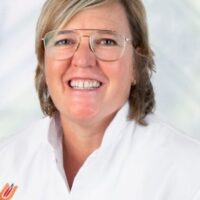 Petra ZuurbierOrthodontist, Heemstede, The Netherlands
Petra ZuurbierOrthodontist, Heemstede, The Netherlands -
 Ruud SchreursHead 3D Lab, Amsterdam, The Netherlands
Ruud SchreursHead 3D Lab, Amsterdam, The Netherlands
- Importance of interdisciplinary collaboration
- Integrating a computer-assisted workflow for customizing treatment planning
- The role of virtual surgical planning (VSP) in simulating treatment outcomes.
- Pre-surgical orthodontic preparation to optimize maxillofacial outcomes.

-
 Raquel Guijarro MartinezOral and Maxillofacial Surgeon, Valencia, Spain
Raquel Guijarro MartinezOral and Maxillofacial Surgeon, Valencia, Spain
- Enhanced Recovery After Surgery (ERAS) protocols represent a global package of perioperative multidisciplinary care pathways that encompass pre, intra, and postoperative techniques aimed at reducing postoperative morbidity, improving patient perception, and reducing hospital stay.
- While these programs are already a standard practice in many surgical fields, they are still incipient in orthognathic surgery.
- This lecture will cover the specific perioperative care strategies with sufficient and updated evidence to be incorporated in our everyday workflow.

-
 Aranzazu SenosiainOrthodontist, Madrid, Spain
Aranzazu SenosiainOrthodontist, Madrid, Spain
Orthognathic surgery is a complex procedure often performed to correct jaw deformities and improve functional and aesthetic outcomes. Despite its effectiveness, it can present several complications, which may include infection, nerve injury, relapse, and malocclusion. This lecture explores the common complications associated with orthognathic surgery and offers insights from the orthodontist's perspective for resolving these issues like the use of skeletal anchorage systems, and precise coordination with the surgical team.

-
 Gabrielle MillesiOral and Maxillofacial Surgeon, Vienna, Austria
Gabrielle MillesiOral and Maxillofacial Surgeon, Vienna, Austria
Overview of the physiological functions of the tongue, highlighting:
- Articulation:
Importance of position, angulation and length of upper incisors in regards of short face syndrome, protrusive incisors, open bite deformities. - Swallowing, tongue thrust:
Compromised transverse width, high vault , maxillary retroposition, proclined and flaring of the lower incisors, lateral and frontal open bites. - Airway
Role of the tongue in OSA patients.
Consequences of all these observations on the surgical treatment protocol (segmentation of the maxilla, SARPE, which jaw to operate, reduction of the tongue) and adjunctive procedures like speech therapy, frenectomy. The importance of the findings for the orthodontic treatment and stability of the final outcome? Some thoughts to lingualis injuries during OGS.
All these considerations will be discussed based on case presentations.

-
 Raquel Guijarro MartinezOral and Maxillofacial Surgeon, Valencia, Spain
Raquel Guijarro MartinezOral and Maxillofacial Surgeon, Valencia, Spain
- Excessive gingival display is a common finding in patients who exhibit dentoskeletal disharmony.
- However, it is a mistake to manage all gummy smile cases with a similar hard tissue approach. In fact, the tendency to overlook soft tissue-related causes and to overcorrect skeletally has the risk to produce a prematurely-aged face.
- This lecture will cover the fundamental diagnostic points to identify the different types of gummy smile, interdisciplinary variables to establish accurate treatment objectives, and key surgical tips to achieve optimal results.
FRIDAY 4 JULY 2025

-
 Domingo MartinOrthodontist, San Sebastian, Spain
Domingo MartinOrthodontist, San Sebastian, Spain

-
 Flavia ArteseOrthodontist, Rio de Janeiro, Brazil
Flavia ArteseOrthodontist, Rio de Janeiro, Brazil
Dr Flavia Artese practices orthodontics in her private practice in Rio de Janeiro, Brazil.

-
 Mike LeungOral and Maxillofacial Surgeon, Hong Kong, China
Mike LeungOral and Maxillofacial Surgeon, Hong Kong, China
Facial asymmetries are common facial deformities and are often a main drive for patients to receive orthognathic surgery.
Apart from the facial deformation and consequential effect including functional, esthetic and psychological setbacks, facial asymmetries are found to cause temporomandibular disorder.
With advances like virtual surgical planning and patient-specific implants, the execution of orthognathic planning has improved significantly.
However, achieving asymmetry can be difficult, and at times impossible
This lecture aims to enhance the understanding of the challenges of managing facial asymmetries, and to suggest realistic approaches in managing the severe cases.
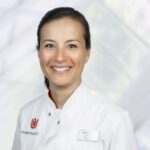
-
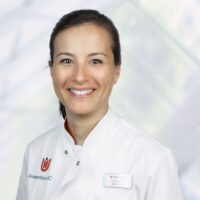 Judith ZechaOral and Maxillofacial Surgeon, Amsterdam, The Netherlands
Judith ZechaOral and Maxillofacial Surgeon, Amsterdam, The Netherlands
- Gender affirming facial surgery is embedded in the transgender care
- Transgender patients seeking gender affirming facial surgery, have different needs and it’s essential to explore those needs before surgery
- A variety of surgical approaches exist to establish feminization or masculinization of the face
- Orthognathic surgery can be a part of gender affirming facial surgery

-
 Domingo MartinOrthodontist, San Sebastian, Spain
Domingo MartinOrthodontist, San Sebastian, Spain

-
 Adaia VallsOral and Maxillofacial Surgeon, Barcelona, Spain
Adaia VallsOral and Maxillofacial Surgeon, Barcelona, Spain
- Changes in the occlusal plane impact the aesthetics and airway volume.
- The inclination of the incisors must guarantee good labial support,
regardless of the position of the jaws. - Changes in the occlusal plane involve cranio-cervical angulation changes, and consequently the Natural Head Position shifts.
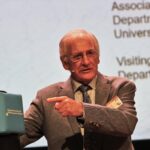
-
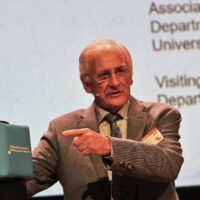 Professor Johan ReynekeOral and Maxillofacial Surgeon, Laren, The Netherlands
Professor Johan ReynekeOral and Maxillofacial Surgeon, Laren, The Netherlands
• The concept of minimally invasive orthognathic surgery does not only involve small soft tissue incisions as a surgical approach.
• The application of a routine “step by step” operating technique as well as being aware of “tips and traps” for each step, increases confidence, efficiency, and quality of the surgical result while it decreases operating time and post operative morbidity.
• The surgeon should have: a clear understanding of the sequence of the surgical steps be aware of complications that may occur with each step the same routine for each procedure a clear vision of the treatment objectives
• The surgical team should: know the surgical routine anticipate each surgical step

-
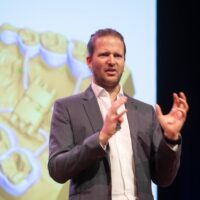 Dr.med.dent Simon GrafOrthodontist in practice Smile AG Belp, Switzerland
Dr.med.dent Simon GrafOrthodontist in practice Smile AG Belp, Switzerland
The first 3d metal printed orthodontic appliance was printed and used in a patient’s mouth in April 2014 in the clinic Smile Inc. of Simon Graf.
In his lecture he will look back on the failures, pitfalls and final success of the approach to virtually plan and direct print orthodontic appliances.
Simon Graf will specific point out the clinical side of bonding and debonding of 3d metal printed appliances, as many clinicians struggle in this point.
He will outline the mandatory steps for a successful combination with skeletal anchorage device like TADs and share his experience during the last 10 years with the audience.

-
 Benedict WilmesOrthodontist, Dusseldorf, Germany
Benedict WilmesOrthodontist, Dusseldorf, Germany

-
 Simon LittlewoodOrthodontist, Bradford, UK
Simon LittlewoodOrthodontist, Bradford, UK
• Experience of UK’s first NHS hospital using this technology for orthognathic patients
• The contemporary high quality evidence of the effectiveness of this technology
• What they found useful
• What they found challenging
• The future - has it got a role, and what further developments are required to make it work?

-
 Dr Lydia LimOral and Maxillofacial Surgeon, Sydney, Australia
Dr Lydia LimOral and Maxillofacial Surgeon, Sydney, Australia
• TMJ pathology can complicate orthognathic surgery outcomes. The diagnosis, treatment planning and surgical management of these conditions can be challenging and controversial.
• This presentation will discuss some of the implications of TMJ pathology in the orthognathic patient and outline when and when not to do TMJ replacement surgery.
• An approach to planning combined TMJ replacement and orthognathic surgery will be presented.

-
 Prof. Lorenzo Trevisiol, MD, Maxillo-Facial SurgeonOral and Maxillofacial Surgeon, Trento, Italy
Prof. Lorenzo Trevisiol, MD, Maxillo-Facial SurgeonOral and Maxillofacial Surgeon, Trento, Italy